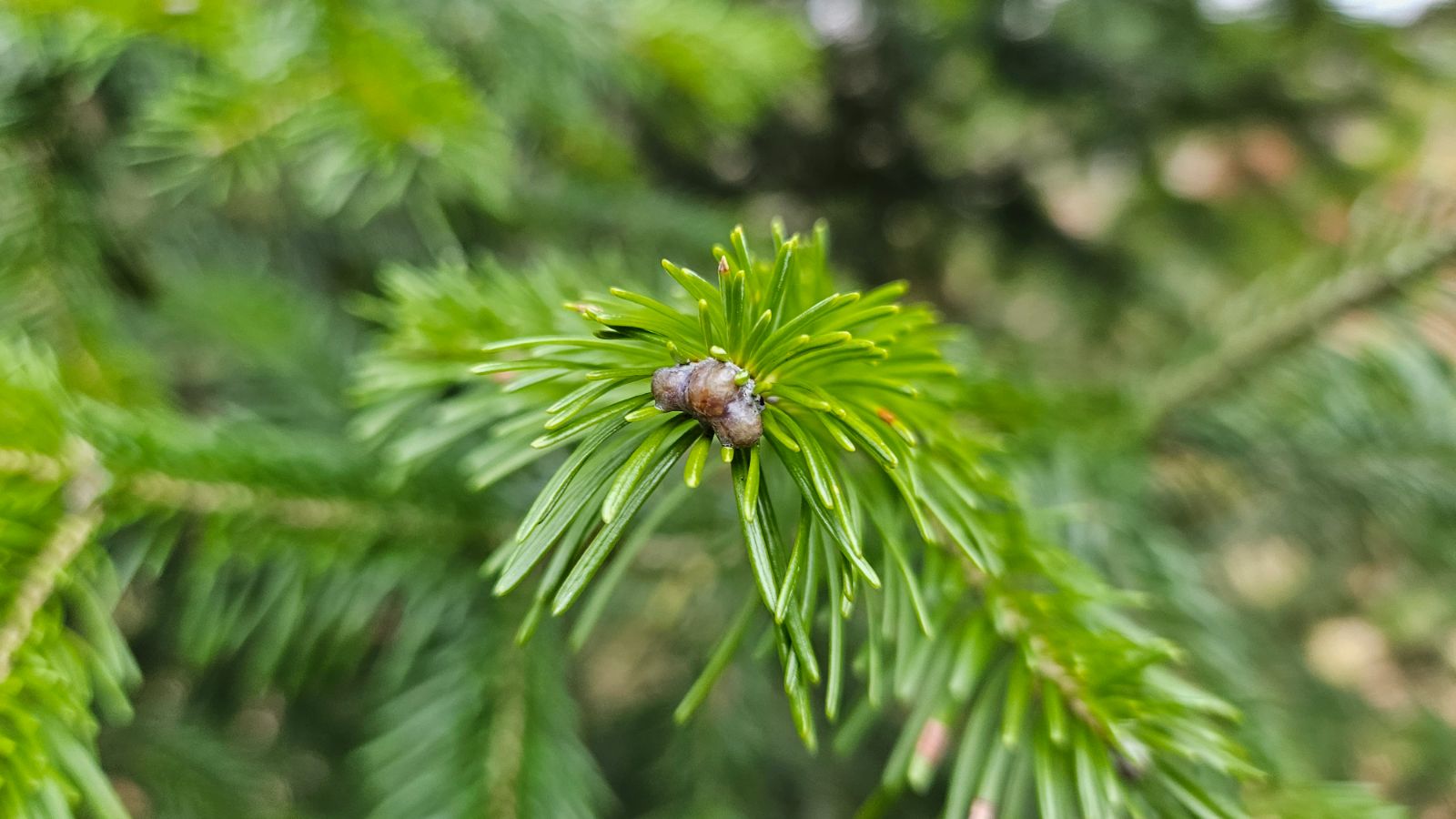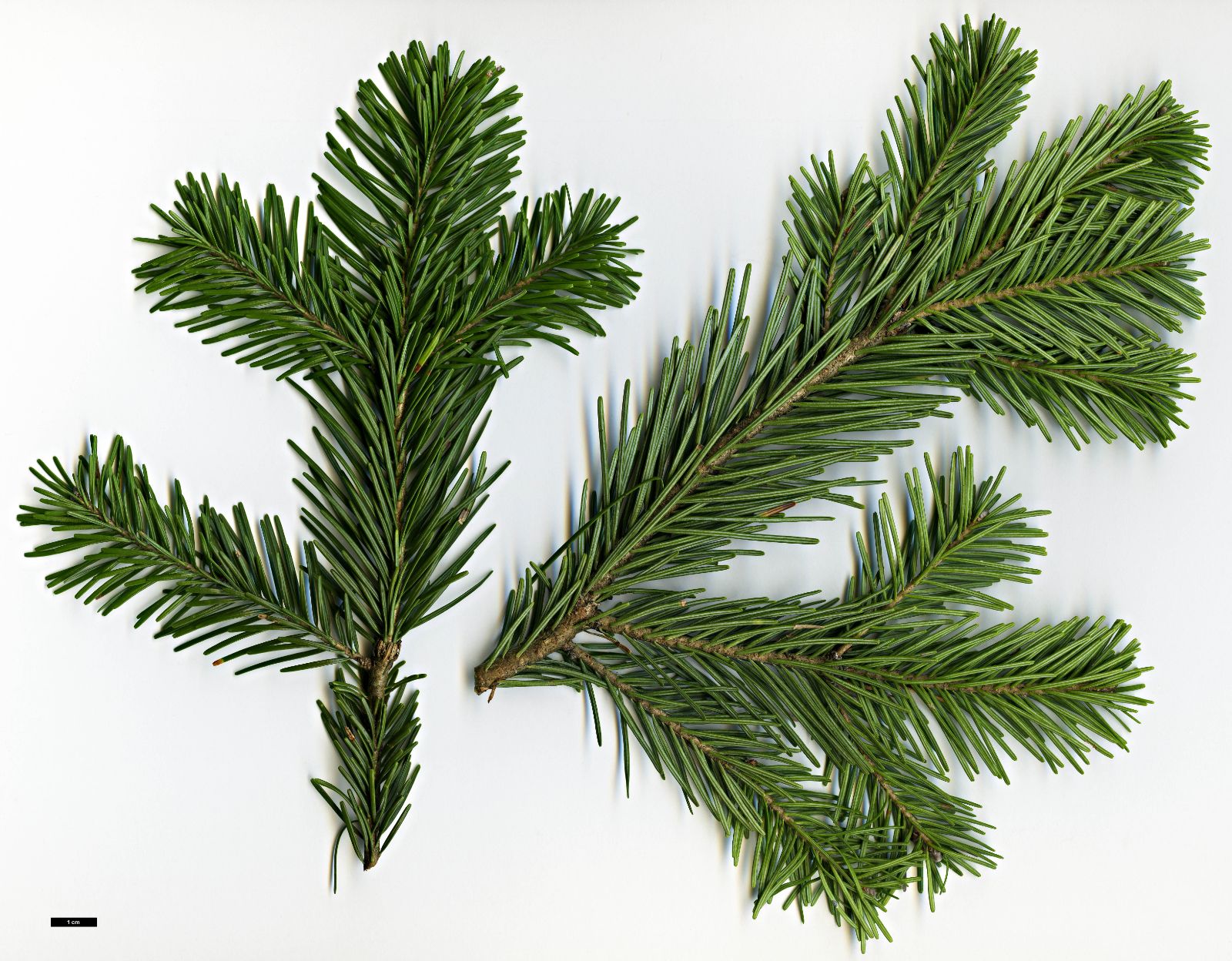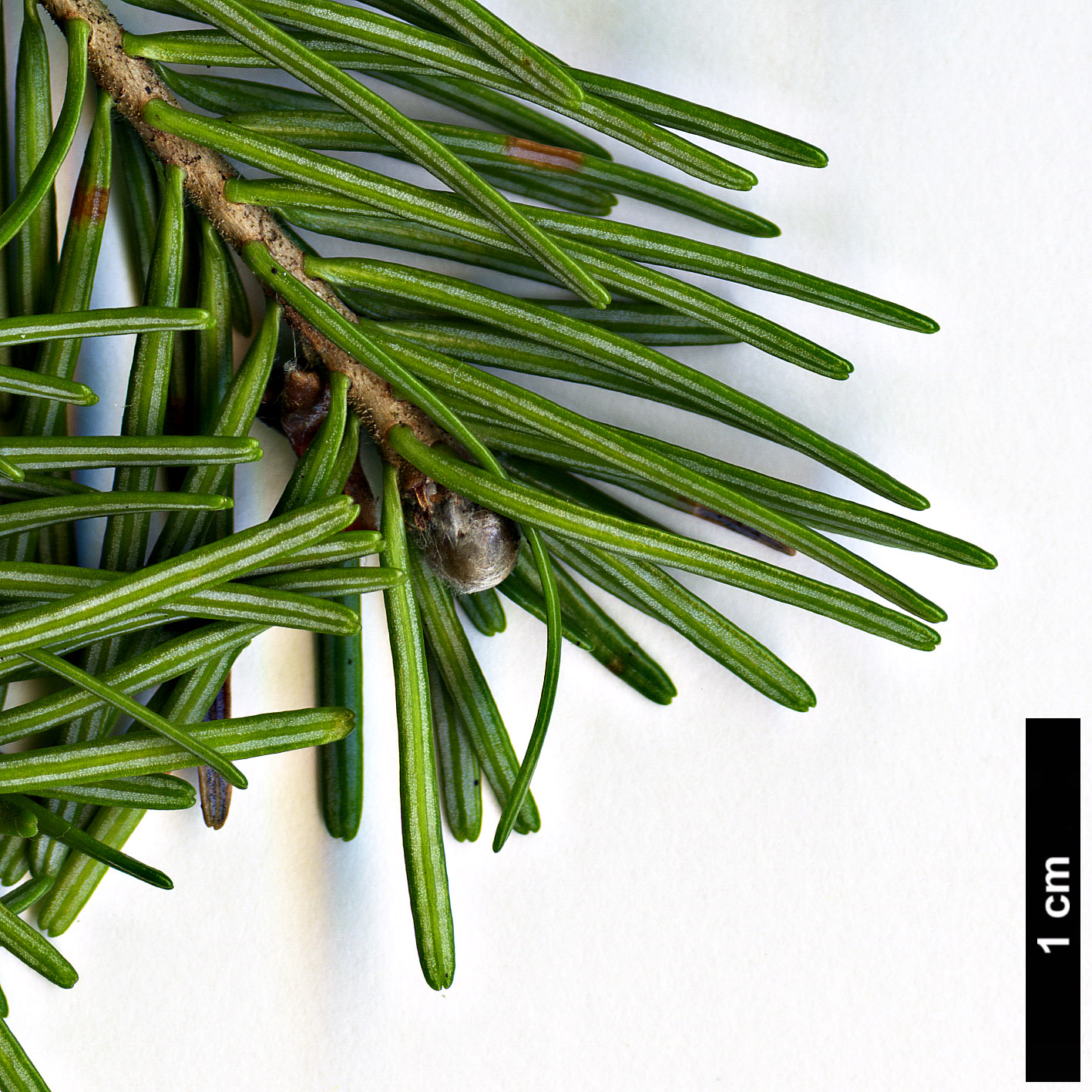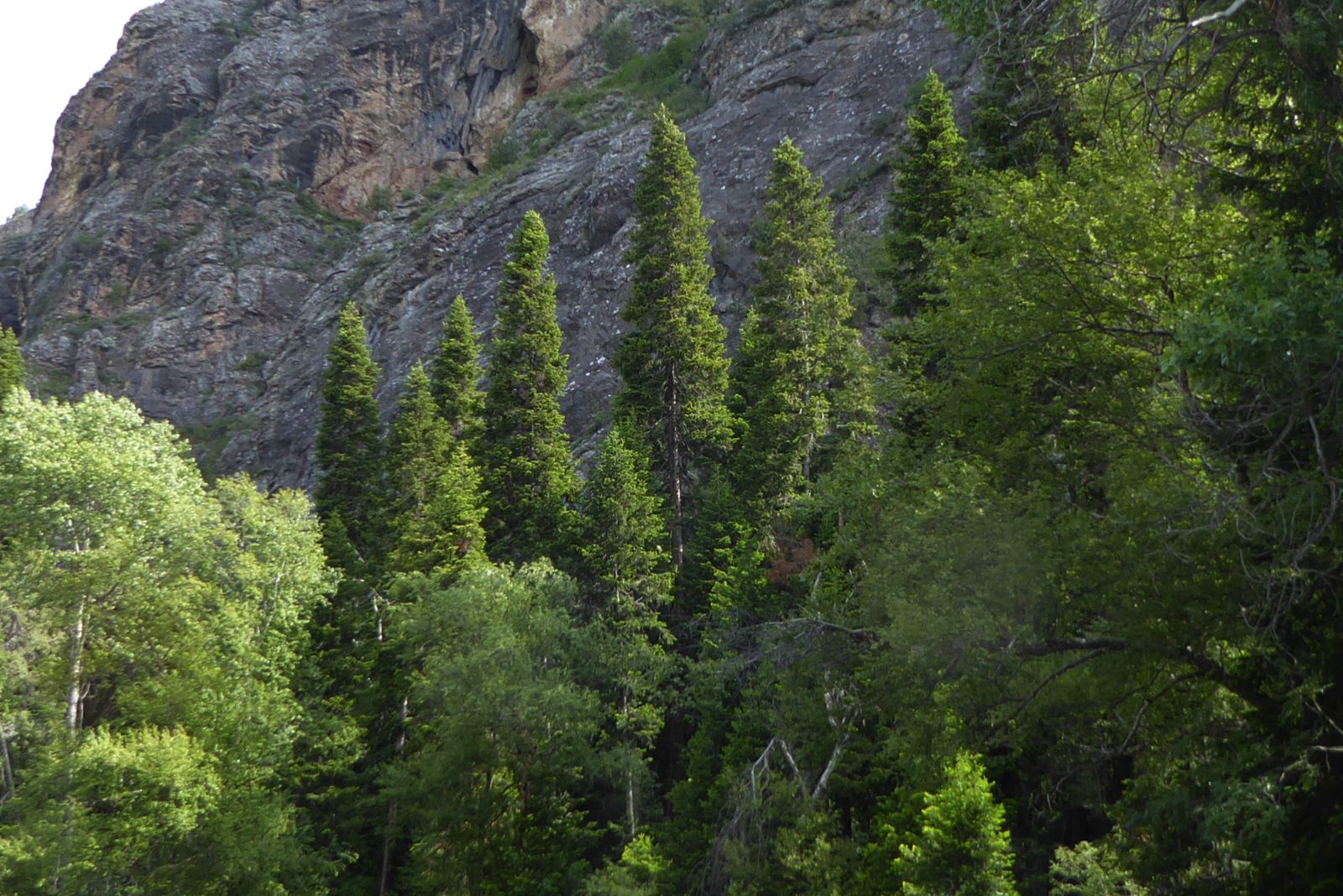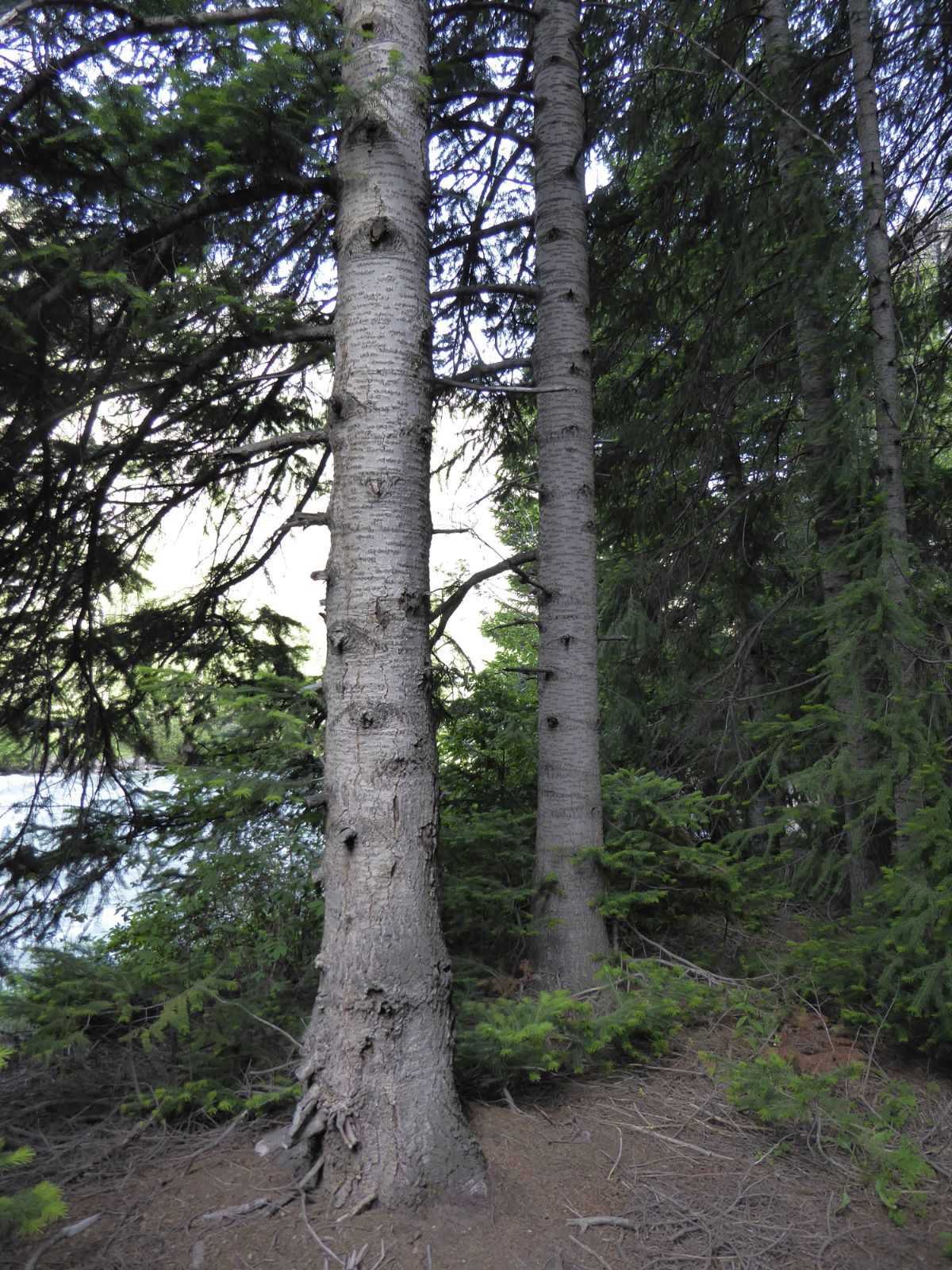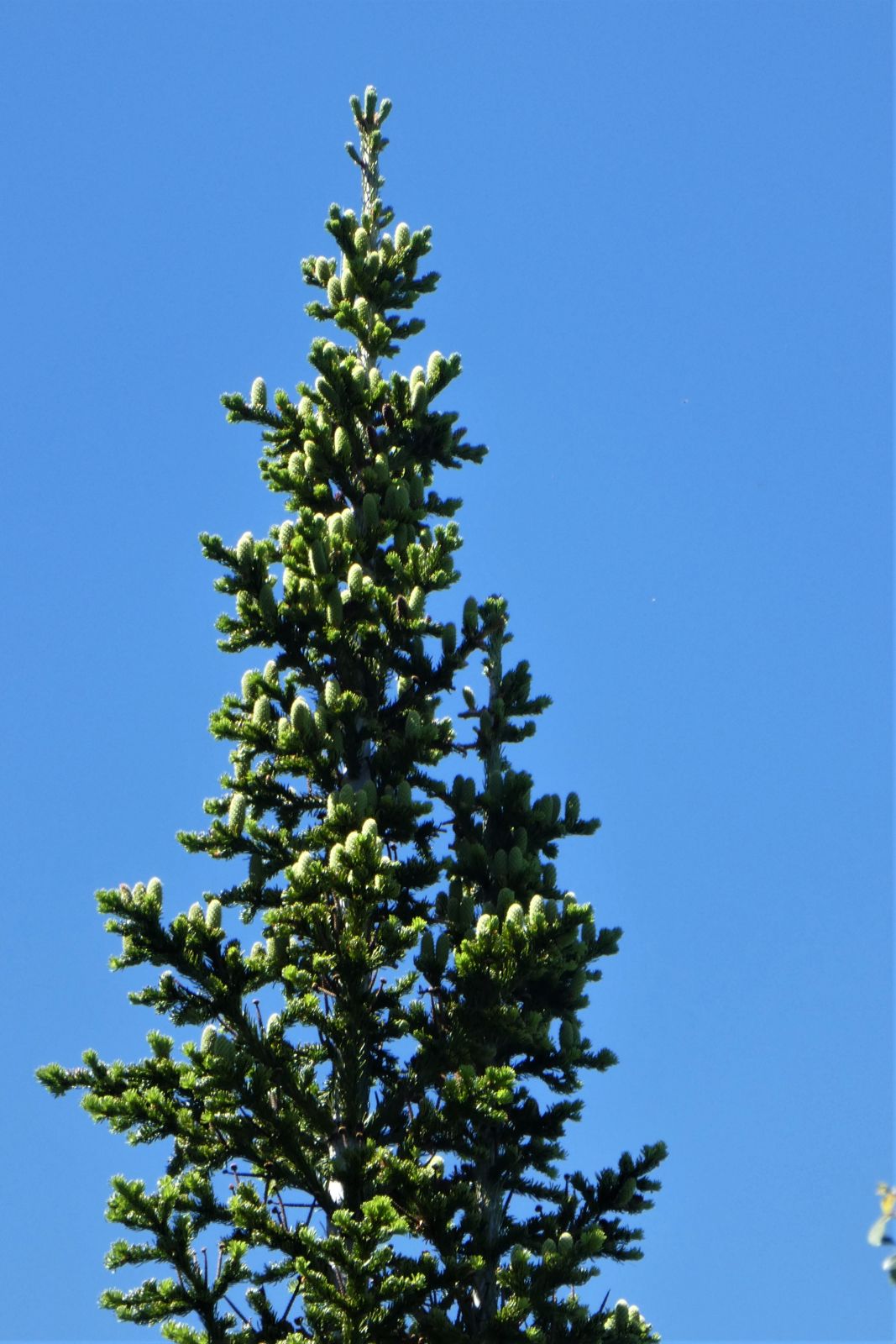Abies sibirica
Sponsor
Kindly sponsored by
Sir Henry Angest
Credits
Tom Christian (2021)
Recommended citation
Christian, T. (2021), 'Abies sibirica' from the website Trees and Shrubs Online (treesandshrubsonline.
Genus
Infraspecifics
Other taxa in genus
- Abies alba
- Abies amabilis
- Abies × arnoldiana
- Abies balsamea
- Abies beshanzuensis
- Abies borisii-regis
- Abies bracteata
- Abies cephalonica
- Abies × chengii
- Abies chensiensis
- Abies cilicica
- Abies colimensis
- Abies concolor
- Abies delavayi
- Abies densa
- Abies durangensis
- Abies ernestii
- Abies fabri
- Abies fanjingshanensis
- Abies fansipanensis
- Abies fargesii
- Abies ferreana
- Abies firma
- Abies flinckii
- Abies fordei
- Abies forrestii
- Abies forrestii agg. × homolepis
- Abies fraseri
- Abies gamblei
- Abies georgei
- Abies gracilis
- Abies grandis
- Abies guatemalensis
- Abies hickelii
- Abies holophylla
- Abies homolepis
- Abies in Mexico and Mesoamerica
- Abies in the Sino-Himalaya
- Abies × insignis
- Abies kawakamii
- Abies koreana
- Abies koreana Hybrids
- Abies lasiocarpa
- Abies magnifica
- Abies mariesii
- Abies nebrodensis
- Abies nephrolepis
- Abies nordmanniana
- Abies nukiangensis
- Abies numidica
- Abies pindrow
- Abies pinsapo
- Abies procera
- Abies recurvata
- Abies religiosa
- Abies sachalinensis
- Abies salouenensis
- Abies spectabilis
- Abies squamata
- Abies × umbellata
- Abies veitchii
- Abies vejarii
- Abies × vilmorinii
- Abies yuanbaoshanensis
- Abies ziyuanensis
Accounts of the two constituent taxa, subsp. sibirica and subsp. semenovii, may be found in their respective articles below.
Abies sibirica and its relatives in north and northeast Asia
Several firs are native to north and northeast Asia, mostly allied to Abies sibirica. This species has the largest distribution of any Abies, extending from Archangelsk in north west Russia (40.5°E) to the Stanovoy Mountains in Russia’s Far East (c. 126°E); an east-west distribution in excess of 4000 km. It is also the northernmost growing fir in the world, reaching 67.6°N. Beyond its eastern limit it is replaced on the mainland by the closely related A. nephrolepis (the more distantly related A. holophylla also occurs here), and in northern Japan, the southern Kurile islands, and on Sakhalin by another close relative, A. sachalinensis (Debreczy & Rácz 2011).
A. holophylla is quite distinct, but it can be challenging to confidently separate the others, particularly so the various taxa that are most often treated at infraspecific rank under A. sachalinensis. Of the latter group, A. sachalinensis var. gracilis is sometimes treated as a distinct species, an approach we have chosen to adopt here for reasons set out in that article. A. sibirica subsp. semenovii is another complication (see below).
One of the more significant problems these firs face in cultivation is their susceptibility to spring frosts. A. nephrolepis and A. sibirica are often singled out for this, but it can be a problem in A. holophylla and A. sachalinensis, too, and especially in some of the taxa usually treated at infraspecific rank within A. sachalinensis. In ‘A Plantsman’s Paradise: Travels in China’ Roy Lancaster explains the difficulties of growing plants from continental north and northeast Asia in areas with a softer climate. The entire woody flora of this region is rendered tricky to accommodate in most temperate maritime regions by the extraordinary climatic extremes these lands experience. Bitterly cold, long, snowy winters yield remarkably quickly to spring, and then long summer days. The climate in maritime regions such as much of the UK and Ireland, adjacent parts of Atlantic Europe, and indeed milder parts of the Pacific coast of North America, too, is simply too soft to grow most woody plants from such areas to their full potential. They lend themselves better to the continental climate found in many parts of North America away from the west coast, and in central and northern Europe, and in northern Asia, too (Lancaster 2008).
Still we try! In the UK and Ireland there is enough of a legacy of unlikely successes to continue to spur us on, and so we keep planting. It is logical to imagine that material sourced from populations with some maritime influence stands the best chance in general cultivation (although no such populations of A. sibirica exist), and the lack of provenance data attached to the ‘unlikely successes’ is a frustration in this regard. On the rare occasions any of these are grown they should be sited with great care, taking this susceptibility into account; if a plant has languished in the same spot for many years, constantly being cut back by frosts, there is nothing to be lost by moving it to a different position.
'Alba'
Found in northern Russia in 1853, ‘Alba’ has leaves that are pale green above, and striking white beneath. Like ‘Pendula’, it is now rather rare (Auders & Spicer 2012).
Dwarf Cultivars
‘Pumila’ is, possibly, the oldest of several names that have been applied to extreme dwarfs, often propagated from witches’ brooms and typically remaining < 50 × 50 cm after many years. This name was first used by Schröder in 1894. The others listed here have been named more recently, and aesthetically differ only in the most inconsequential details:
- ‘Elegans’ Sparsely branched, leaves minutely silver-margined.
- ‘Jeri’
- ‘Liptovský Hrádok’
- ‘Lukasz’
- ‘Pumila’
- ‘Taiga’
- ‘Vietalva’
'Pendula'
A form with short, thickened branches, and pendulous second-order branches and branchlets. Selected by the Russian firm Regel & Kesselring c. 1881, it is now extremely rare (Auders & Spicer 2012). Krüssmann (1985) thought it likely extinct.
subsp. semenovii (B. Fedtsch.) Farjon
Common Names
Tien Shan Fir
Semenov Fir
Pichta Semenova
Synonyms
Abies semenovii B. Fedtsch.
Abies sibirica var. semenovii (B. Fedtsch.) Liu
This subspecies differs in its more prominently ridged branchlets, less resinous buds, marginal resin canals (medial in subsp. sibirica), greater number of stomatal lines in each band (5–7 cf. 4–5), and slightly larger cones (8–10 cm) with bracts wider than long (cf. as long as wide). Differences in shoot colour are inconsistently reported and probably unreliable. (Farjon 2017; Debreczy & Rácz 2011).
Distribution
- Kyrgyzstan – The western Tian Shan
RHS Hardiness Rating: H7
USDA Hardiness Zone: 2
Seed of subsp. semenovii collected by John Silba in the Tian Shan in 1989 is the only introduction of this taxon that we can trace, but material seems to have been disseminated quite widely. For Keith Rushforth (pers. comm. 2007) in Devon it has proved hardier than subsp. sibirica, which has died out for him, subsp. semenovii by contrast having grown, slowly, to almost 2 m (in 15 years). At Howick two specimens planted in 1992 are about 2.5 m tall, and although not damaged by frost, have been reluctant to form good leaders (C. Howick, pers. comm. 2007). There is also a small tree at Wakehurst Place.
subsp. sibirica
Common Names
Siberian Fir
Pichta Sibirskaya
Xianbei Lengshan
Xinjiang Lengshan
Chadsura
Sapin de Sibérie
Tree to 40 m, to 1 m dbh. Bark smooth, greenish- or grey-brown with numerous resin blisters in young trees, breaking into thick stiff plates in older trees. Crown narrowly pyramidal or conical with tapering spires. Branchlets slender, firm, smooth or faintly ridged, undersides yellowish-grey or pale-brown, then grey with age, upper sides often whitish; short-pubescent at first, soon glabrous. Vegetative buds globose, 2–3 mm long, very resinous. Leaves spirally arranged, 1.3–3 cm × 1–1.5 mm, apex emarginate to acute. Pollen cones crowded on the underside of the shoot, 1.5 cm long, yellow with red microsporophylls. Seed cones subsessile, ovoid-cylindrical, apex obtuse, 5–9.5 × 2.5–3.5 cm, purple-blue when immature, maturing through blue-brown to cinnamon- or greenish- or yellowish-brown when ripe; seed scales broadly flabellate; bracts short and rounded, 0.8 cm long with a tiny cusp, entirely included at maturity. (Farjon 2017; Debreczy & Rácz 2011; Grimshaw & Bayton 2009).
Distribution
- China – Xinjiang
- Kazakhstan – In the extreme east, in Katonkaragay and Kurshim Districts
- Mongolia
- Russia – Over a vast area, from Archangelsk near the White Sea west of the Urals, to the Stanovoy Mountains in the Russian Far East, in Amur, Buryatiya, Chita, Irkutsk, Itay, Khabarovsk, Krasnoyarsk, Tuva, West Siberia, Yakutiya.
RHS Hardiness Rating: H7
USDA Hardiness Zone: 2
There is little that can be added to the account of this taxon given in New Trees. The tree at Abbeyleix has not been measured since 2000, suggesting it is either moribund or more likely dead (Tree Register 2020), while the statement that ‘The species may be worth trying in the United States in the upper Midwest, or in Canada’ remains true (Grimshaw & Bayton 2009). Even in colder regions of central Europe it has its limitations, such as at Rogów in Poland where ‘it is weak and short lived’ (Grimshaw & Bayton 2009), while any kind of maritime influence seems to be severely debilitating, as has been the experience at the Gothenburg Botanic Garden in Sweden (Aldén 2006). In their survey of firs growing in the Arnold Arboretum Warren & Johnson (1988) mention a single specimen, then 40 years old and 12 m × 30 cm dbh. Similarly, a single tree at the Dominion Arboretum in Ottawa, Canada, planted in 1952, was 9 m tall and ‘one of the fastest growing Firs’ there in 1980 (Buckley 1980).
The Siberian Fir has, however, long been valued in the far north of Europe, in northeast Scandinavia and in western Russia and adjacent regions around the eastern Baltic Sea, both as an ornamental and as a subject in forestry. A remarkable woodland example grows by the roadside in Laukansaari, Finland, over 40 m tall in 2013 (monumentaltrees.com tree id 9095). A. sibirica was the first non-native conifer planted at the Mustila Arboretum, Finland in c. 1902, a country where it is the ‘most familiar’ fir species, to the extent that it ‘can be regarded as characteristic of the Finnish historical countryside landscapes’ (mustila.fi). Elwes reported other fine examples from the Botanic Gardens in Helsinki, and in August 1908 saw for himself a fine tree at the Botanic Garden in Uppsala, north of Stockholm, Sweden, at that time 21 m × 30 cm dbh (Elwes & Henry 1906–1913).
Citing Loudon, Elwes suggests Siberian Fir was first introduced to the UK from the Altai in 1820, but the scene was soon set for disappointment. Perhaps the best tree he could report, remarkably, was a 10 m tree at Pampisford, Cambridgeshire – a very dry site over shallow chalk – which had layered its lowest branches and developed ‘five independent stems about six feet in height’ (Elwes & Henry 1906–1913). This tree is long gone, of course. Nowadays the Tree Register database includes several records of larger examples in Wales and Scotland: Brechfa Forest Garden in Wales (25 m in 2018); Tannadyce in north east Scotland (20 m in 2018); and two trees at Kilmun on Scotland’s west coast (16 and 19 m in 2007). Keith Rushforth identified the Tannadyce tree, and his determination was extrapolated to the others based on their remarkable uniformity (Tree Register 2020). They have heavily fluted boles like A. veitchii, a character also shared by A. sachalinensis. Writing in 1972, however, Alan Mitchell, who was familiar with all three locations, suggested that A. sibirica was probably not in cultivation and all trees so-labelled were in fact A. sachalinensis (Mitchell 1972). In the case of the largest, 25 m in under 50 years is an almost impossible rate of growth for this notoriously difficult species in the UK, and so we have to conclude that the others, and perhaps all of them, probably represent A. sachalinensis. This serves as a useful example of just how difficult it can be to identify certain Abies species!
Several cultivars of A. sibirica are known, and whilst their precise parentage is rarely given in literature, it is reasonably safe to assume that nearly all belong to subsp. sibirica.


